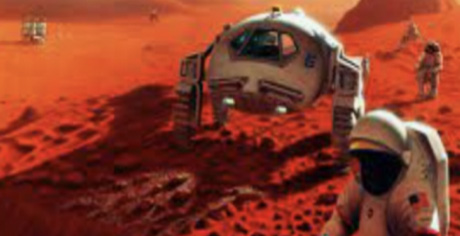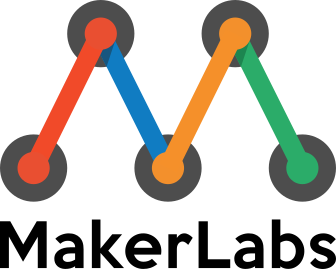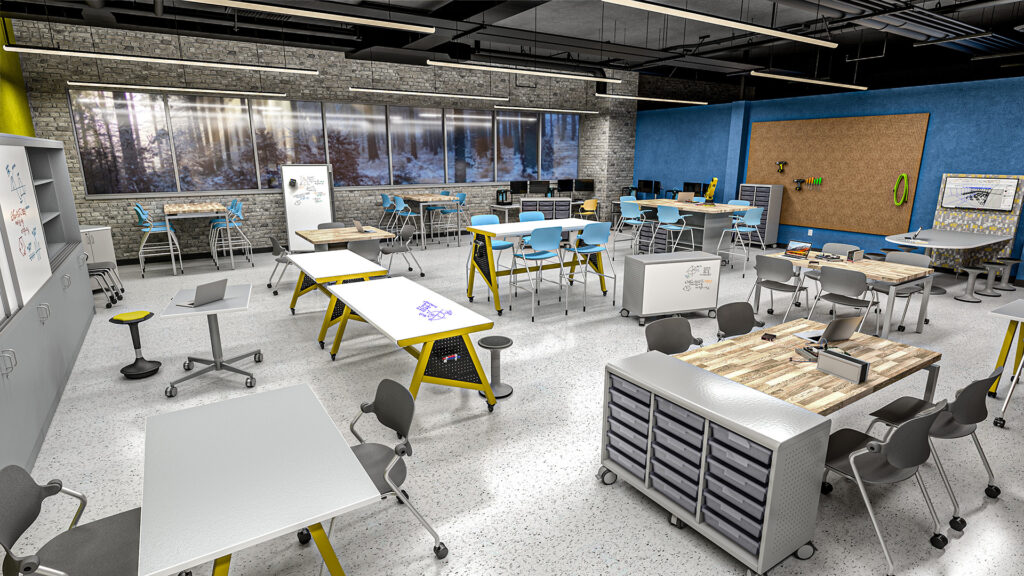
Maker Challenge #1
Inclusive and Immersive Makerspace Goosechase – “Spell it Out!”
Completed with Vicki Glover, James Halliday, Jessie Sorensen, and Meghan Roughley
Make, locate, and create! Using the materials in your space or in a space that you explore, you are going to create the word “Makerspace in a original, inclusive and critical way. You will take a picture of the letters spelled out or a collage of pictures of letters together. You may not simply find pictures off the internet. These need to be originals. As always position your identity while considering your privilege/non-privilege and inherent biases in this task. Consult the EDIDA frameworks in doing so. Work together and have fun.
Inclusive and Immersive Makerspace Goosechase – Spell it out! Mission instructions
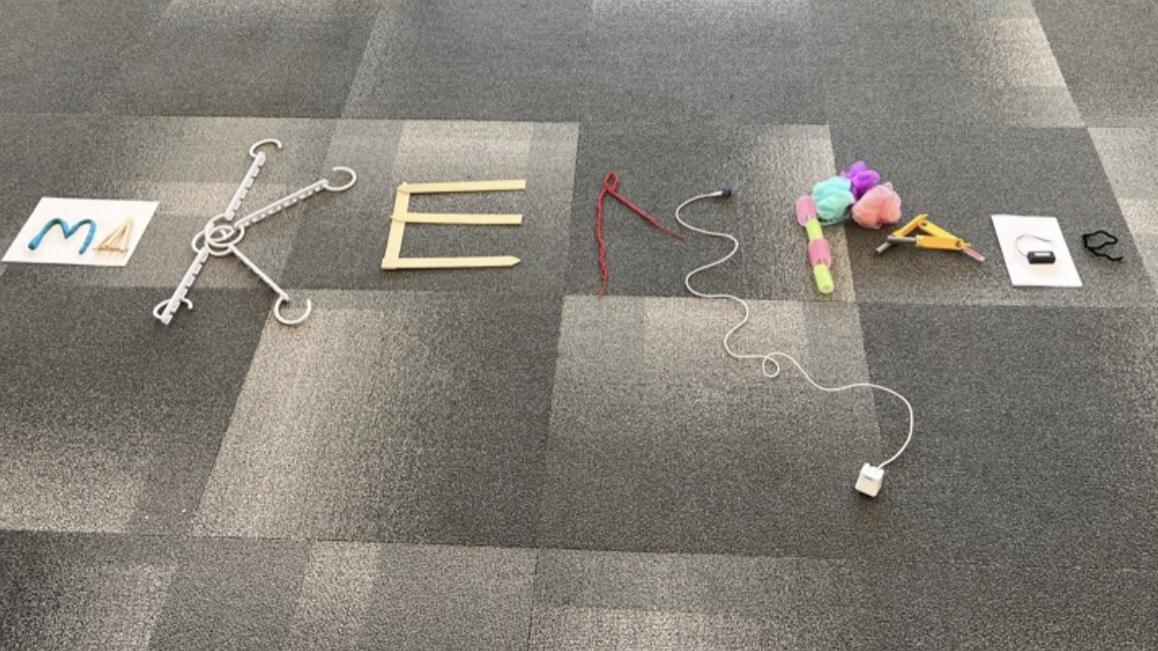
Reflection:
This was a great challenge, which did not even seem like a challenge at the time. We each individually approached the available materials to see how they could be used to represent the different letters of “Makerspace” for the group. Our individual creativity and backgrounds saw different uses of the various materials, we also used our skills to the group’s advantage like Jessie knitting the “r” rather than just laying out the yarn in the shape of the letter because of this, the product showed the uniqueness of our group as likely no other groups would have the exact same backgrounds and experiences, meaning their product even if using the same materials would not be the same as ours. The activity also called for us to “hack” the materials or rather find new or alternative uses for the various elements, a key component of the maker mentality (Cohen et al., 2017). For my selection process, I wanted to include elements of high tech and low tech in the product to demonstrate the wide range of making activities.
This was a great teambuilding activity, and I can definitely see using this challenge, with a different word, with colleagues and student groups to build a sense of community which is so important with both education and making. For example, with staff have them use elements to spell out the name of the school, or department, which represents the culture and community of the school/department, a fantastic way to examine the school’s culture and prompt further discussion on the topic. Similarly with students have them spell out the course using elements that represent the course – it could be a great way to introduce the course and be a diagnostic for what they already know or think they know, or as a review/wrap-up of the course to represent what they have learned about the topic throughout the course.
Reference:
Cohen, J., Jones, W.M., Smith, S. & Calandra, B. (2017). Makification: Towards a framework for leveraging the maker movement in formal education. In Proceedings of Society for Information Technology & Teacher Education International Conference 2016 (pp. 129-135). Chesapeake, VA: Association for the Advancement of Computing in Education (AACE). https://www.learntechlib.org/primary/p/174191/

Maker Challenge #2
Mission to Mars
Completed with Meghan Roughley and James Halliday
Reflection
I was incredibly grateful to work on this challenge in a group as the first time I read the challenge I could not wrap my head around how using no/low-tech or even high-tech materials I was supposed to make it to Mars, when NASA has not done it yet.
I could not wrap my head around how to look at the challenge in a creative way, and for that I am incredibly grateful to Meghan and James as they made that leap. I tend to be a very linear thinker at times, especially when stressed and tend to look only within the box, my skill lies usually in making things work, the creative element of design or visioning is not one of my strengths. Once we decided to focus on making the rover/module accessible to people of all mobility types and levels we had a path forward.
For me, this challenge really reinforced the importance within the maker movement and spaces of community that we began to explore in CLT #1 & 2. I was able to lean on my group mates for a concept of what we wanted to do, make sure that people of all mobility types and levels could access the module/rover, I was then able to bring my strengths of how we might accomplish this into play.
This challenge highlighted for me the need to stretch myself to look for other pathways and ways of doing things. I had shut down when exploring the task, the day before because I could not think of a way to approach the challenge. One of the reasons I was excited to work with Meghan and James was that I wanted to see how they would approach the issue. I need to work at looking at problems/issues and trying to either break them down into smaller more manageable components, or to look and see if there are alternative ways of looking at the issue altogether that may bring greater clarity and understanding. Alternatively, or in conjunction with this, I also need to be better at asking for help and admitting that I am struggling – I tend to internalize and try and struggle through, often leading to great frustration and unneeded levels of stress.
Video Overview of Our Maker Challenge
Completed Maker Documentation

Maker Challenge #3
Change Makers Carboard Tiny House
Completed with Jasmine Atwal, Ka-Yee Chu, Michelle Desgroseilliers, Tiffany Ku, Stephen Wellsby, & Vera Xiong
Reflection
As a group we were still very moved by Dr. Mark Edwards’ words from the day before when he talked about using land acknowledgements as a ceremony and a framework for future thought. Because of this we decided to build a Coast Salish plank house to honour the xʷməθkʷəy̓əm (Musqueam) Nation on whose lands we were studying. Since we are uninvited settlers on the lands of the Coast Salish peoples, it was important to us that we use an authentic source as the model or plan for our cardboard creation. We used an Aboriginal Education site, https://www.comoxvalleyschools.ca/indigenous-education/big-houses/, for the source of our design, it would have been even better to work with a member of the xʷməθkʷəy̓əm Nation. In the end we chose a design that was not accurate to the xʷməθkʷəy̓əm, but rather to nations farther north. An authentic big house, of the design we chose would have a carved pole at the one end facing approaching visitors, we very intentionally decided not to attempt a carved pole a rather place a blank pole at the end of our cardboard house as we are uninvited settlers and do not have the right to appropriate their culture and use their artwork without their permission – which we did not seek.
As a Social Studies teacher I can certainly see using a making challenge almost exactly like this as part of my First Nations unit for Grade 9. Having the students be hands-on with constructing appropriate styles of houses for the different First Nations cultural groups that we study in the course as part of understanding how they adapted to the environment in which they lived and the resources they had available pre-contact/colonization makes it more engaging and provides great opportunities for further extension. As a settler I would want to make sure to consult with representatives from the appropriate peoples and ideally have their knowledge keepers or other members of the community work with my students, in-person or virtually, in explaining the reasons for the design elements in the various housing styles. This would also be a great cross-curricular unit with the ADST department, allowing for the use of materials, and tools beyond what are available in the classroom.
Completed Maker Documentation
Design and Construction Photos
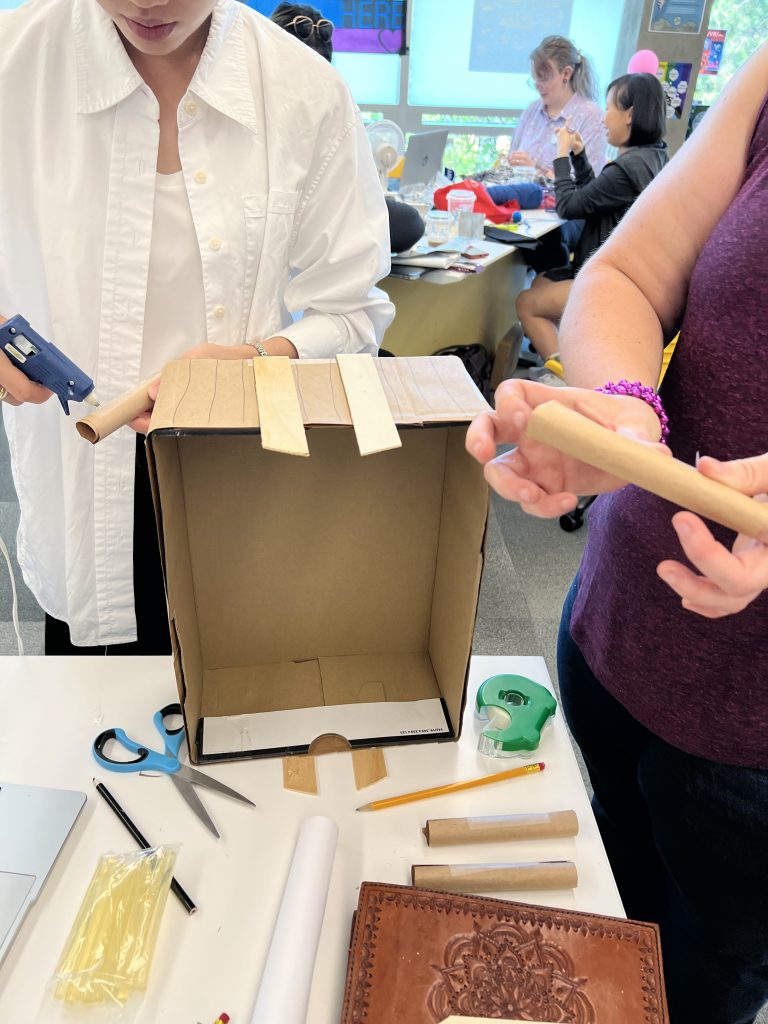
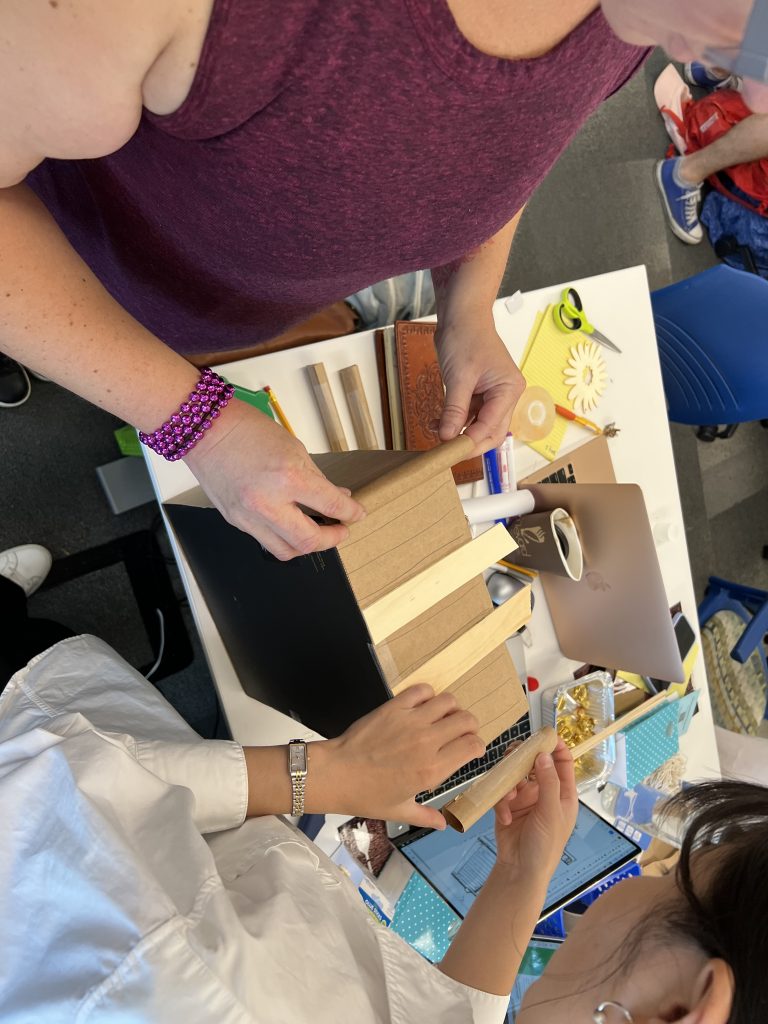
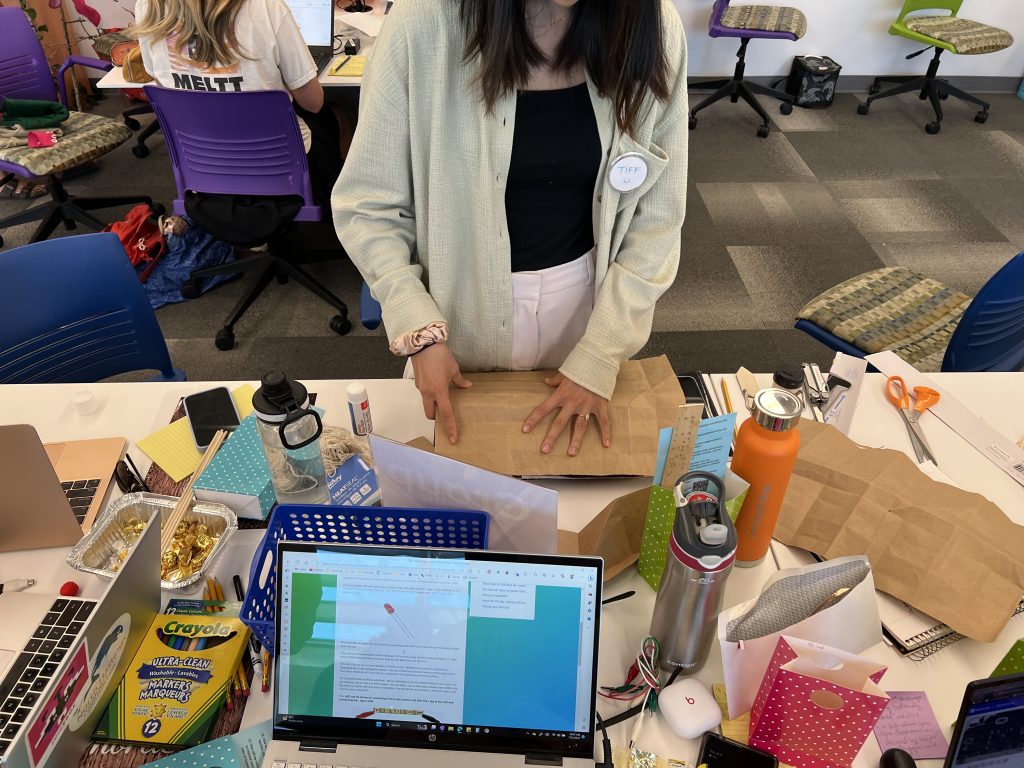
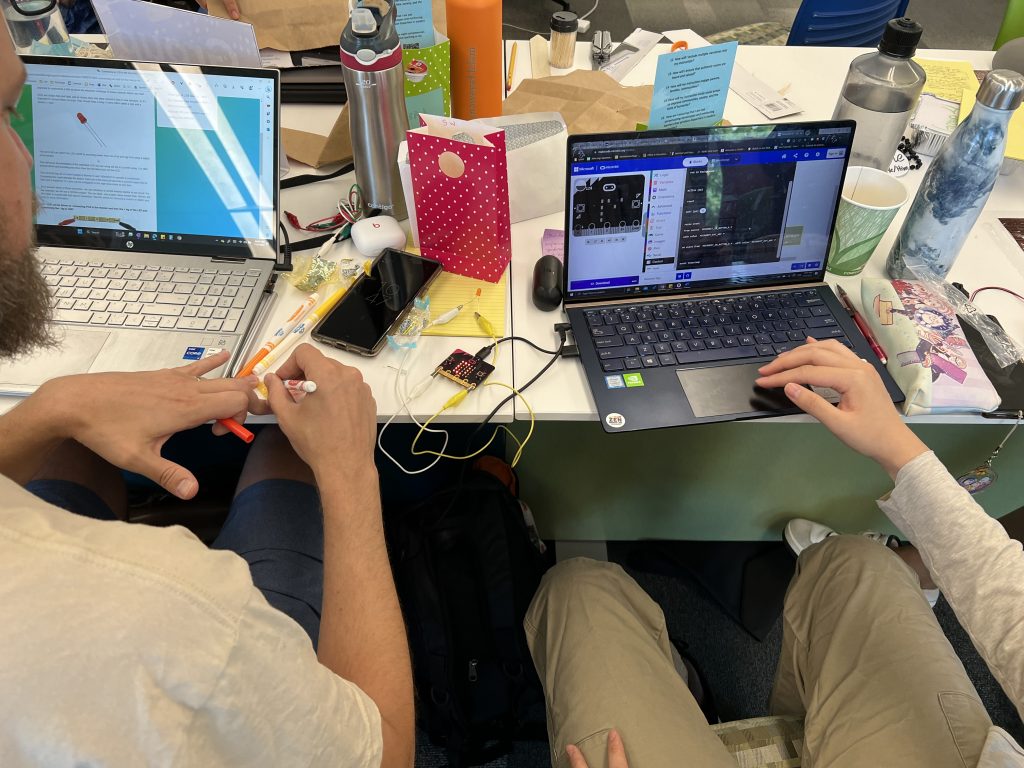
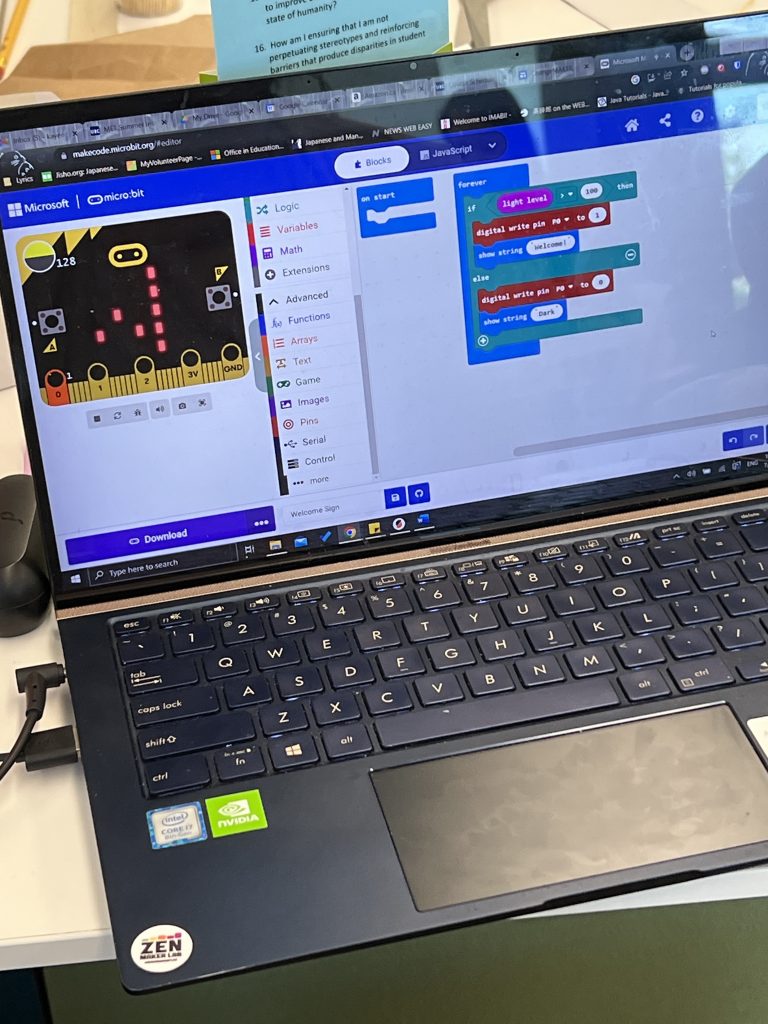
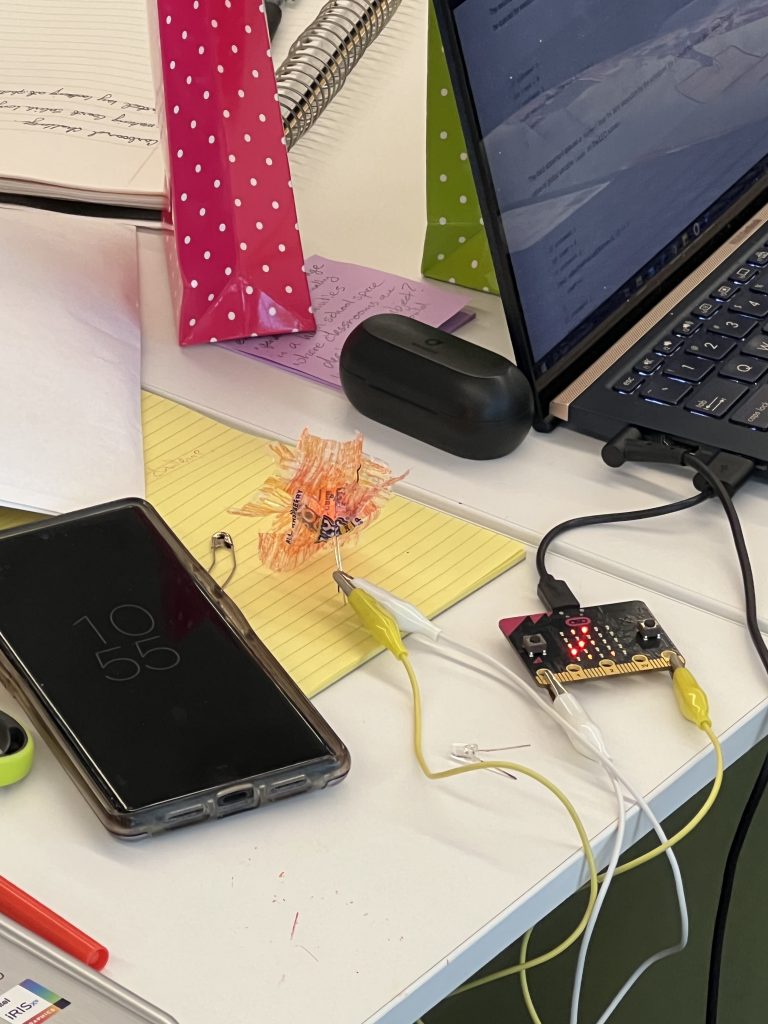
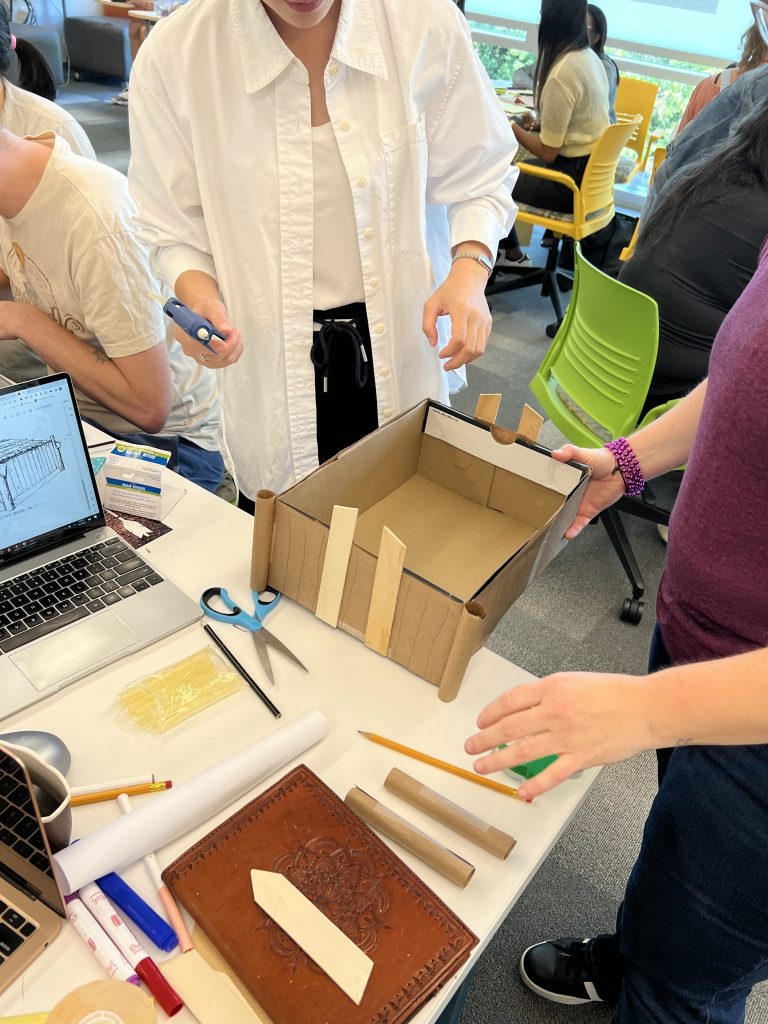
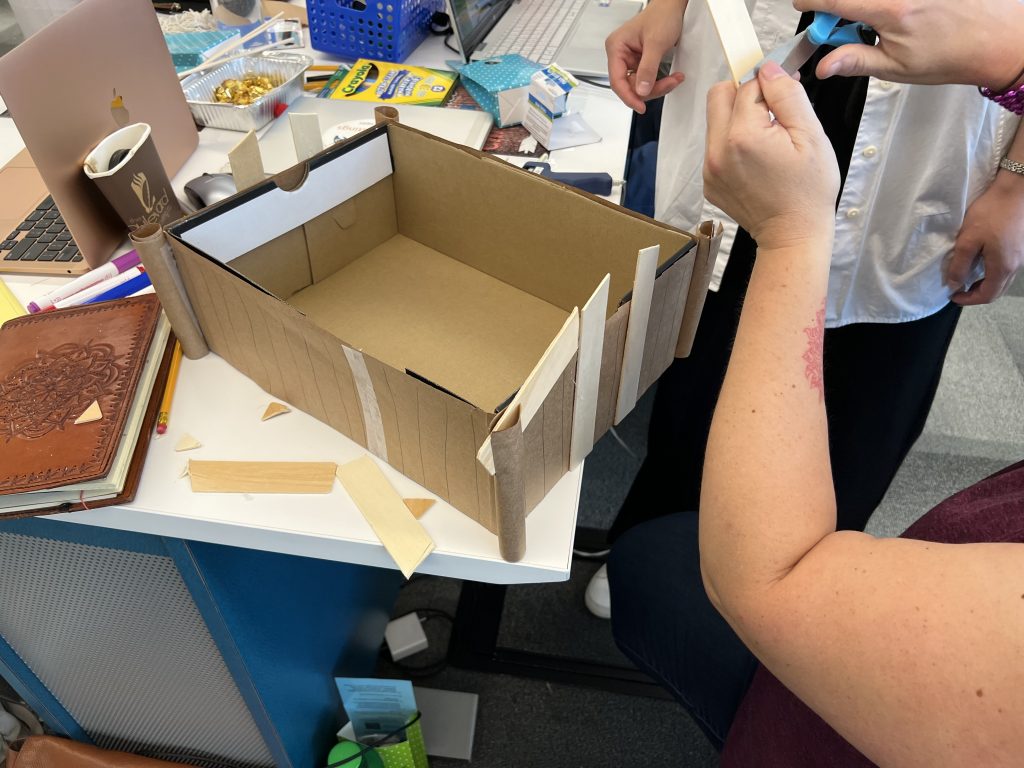
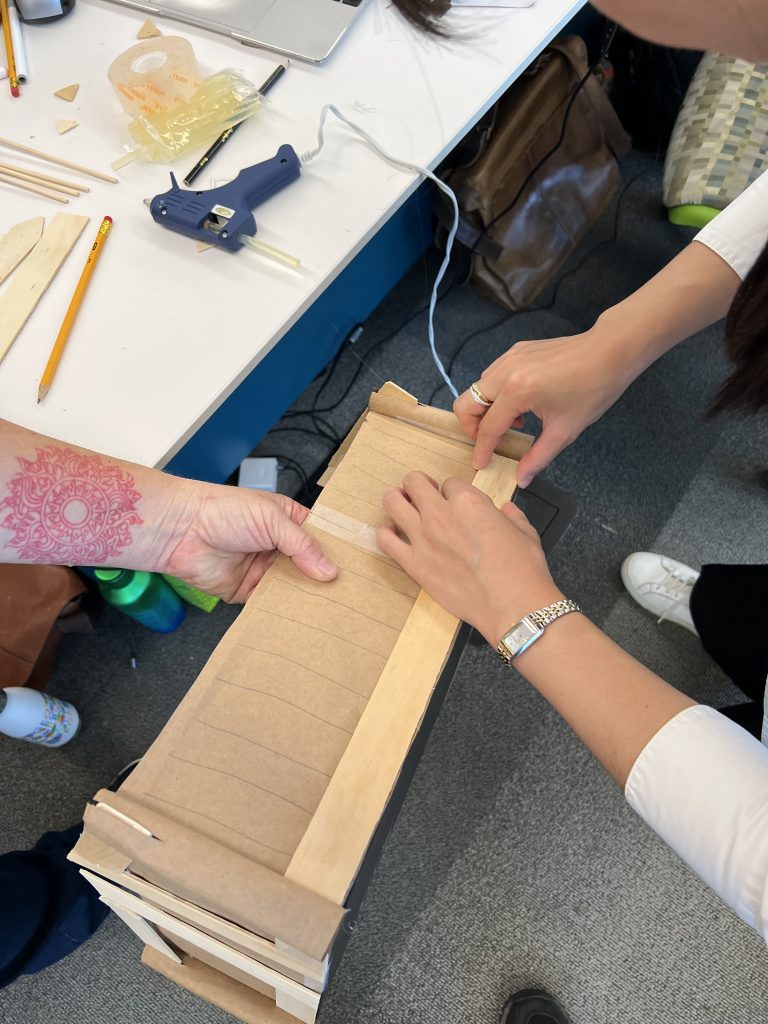
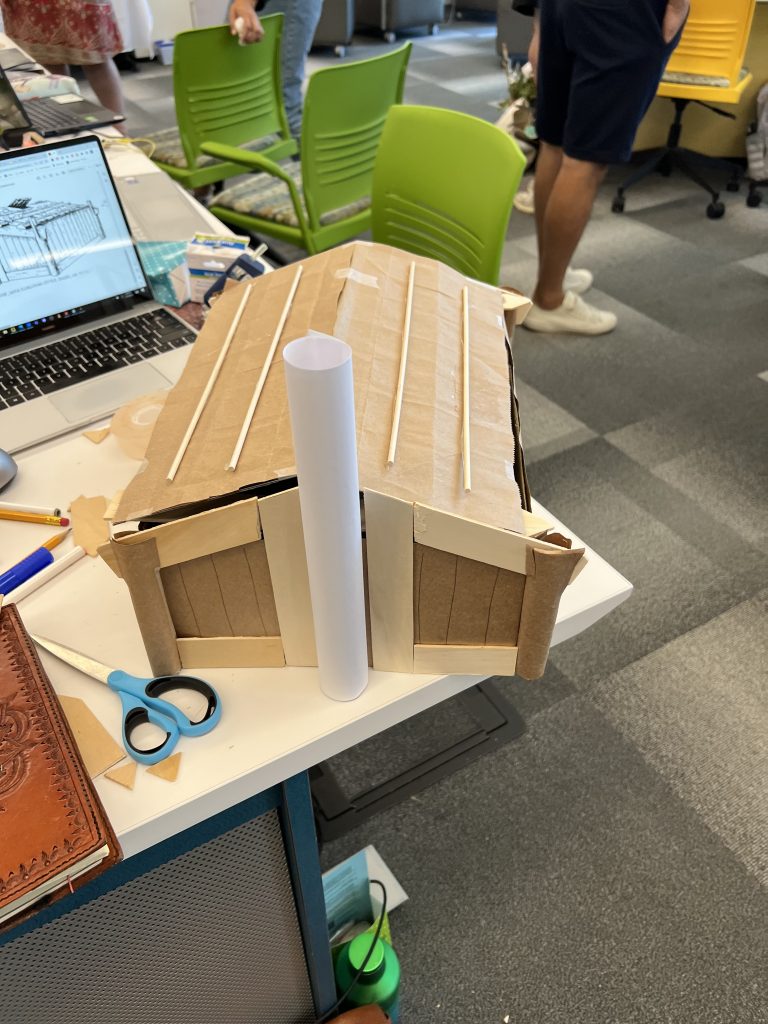
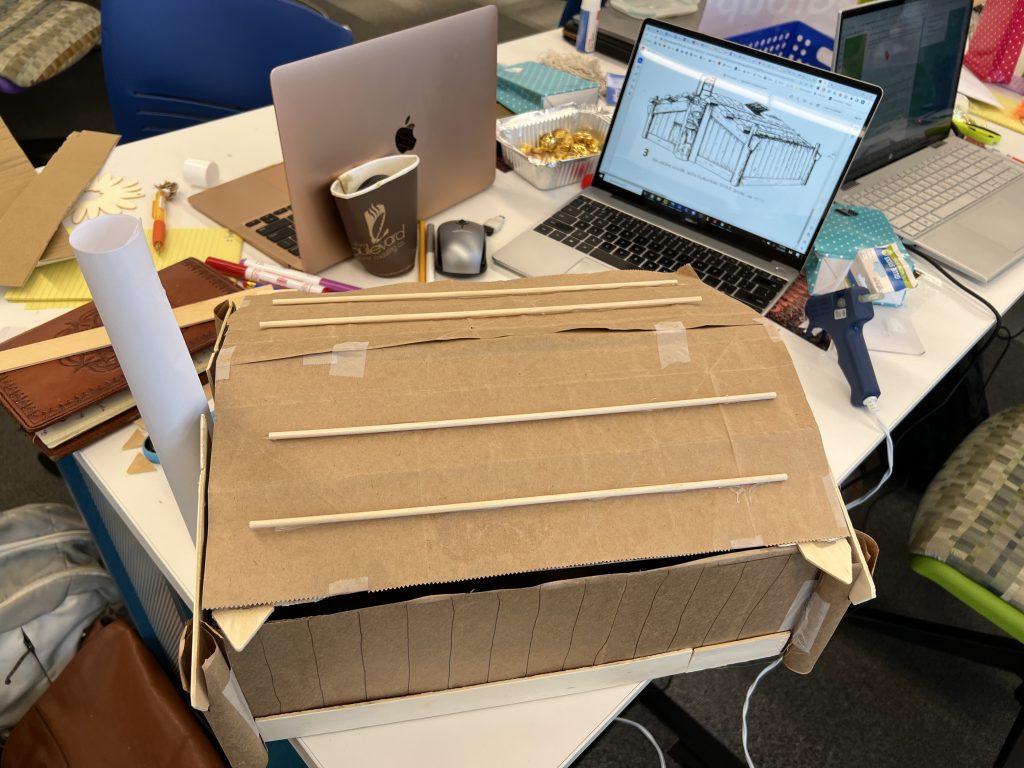
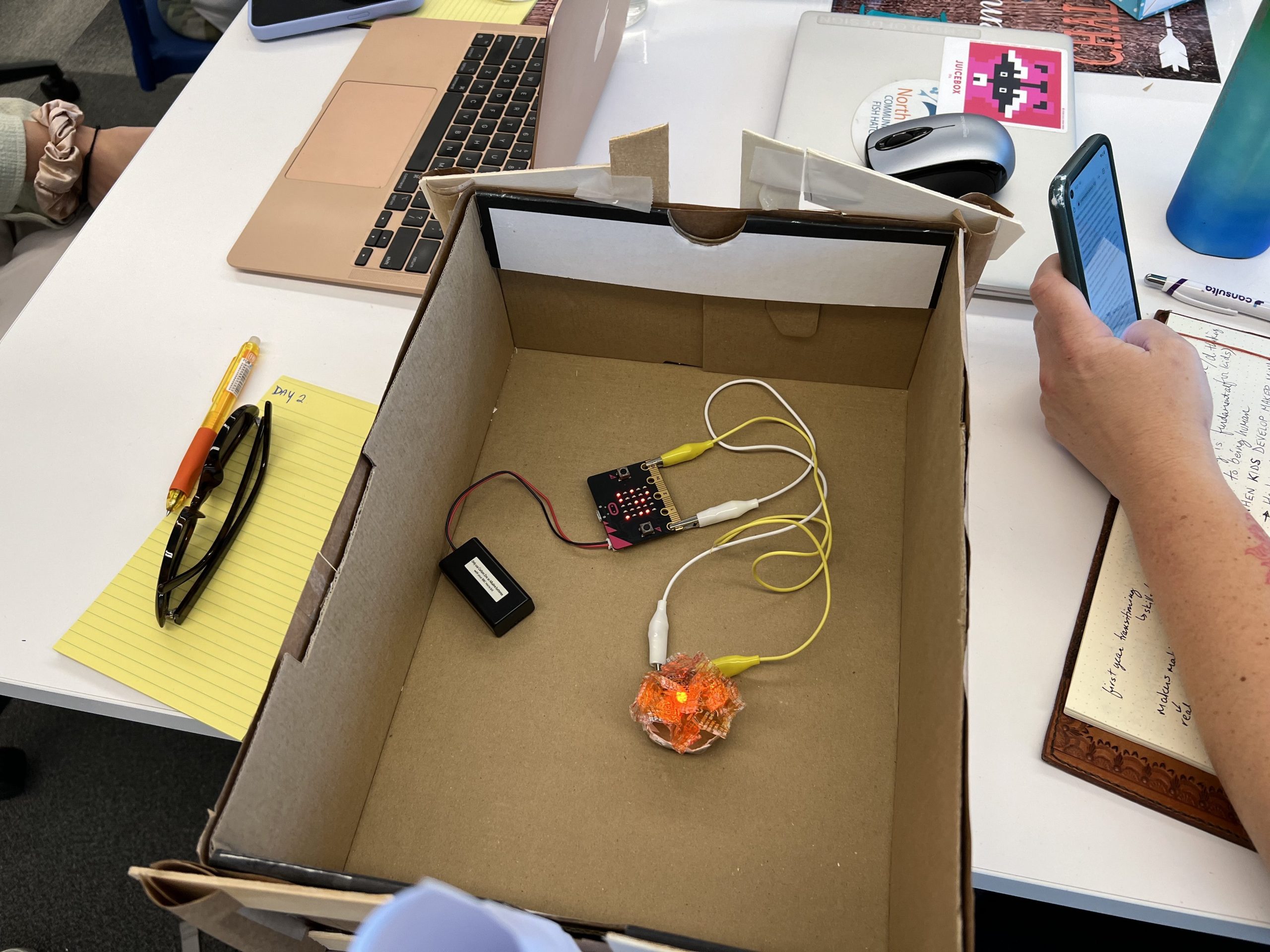

Maker Challenge #4
Our group’s task/challenge at MakerLabs was to represent ourselves through the use of paint on puzzle pieces cut out of a sheet of plywood and engraved with our names using a laser cutter. The intent was to show how our individuality comes together to express a diverse collective whole of the group.
I chose to reflect my interests in the outdoors, specifically the love of the mountains and the water for my first puzzle piece. For my second, I chose to recreate a photograph I took while leading students through Japan, specifically the Torri gate at Itsukushima representing my role of exposing students to new cultures and ways of thinking about the world.
Even with my limited artistic abilities it was a calming and grounding experience at the midpoint of a very hectic week. It was also a great group bonding activity as it gave time to talk with others in the class that I had not had the time or opportunity to do so yet due to the busy schedule on campus and a preoccupation on the Unit of Learning and other tasks.
The puzzle piece fitment is a terrific way to show how the group/community/class links together and the whole represents more than the sum of its parts. If there was not access to a laser cutter, this activity could easily be done with paper or other elements that could be cut into the puzzle piece shape by hand with names printed or stencilled on.
This is a great way of promoting inclusivity within a classroom or community, it ties in closely with Kye’s (2020) recommendations of the use of Culturally Responsive Pedagogy as it calls on students to embrace their unique backgrounds in designing their piece and would show, when combined the diverse cultural makeup of the community not unlike a patchwork quilt. Even if two students had similar backgrounds, they are likely to express themselves differently, even if they choose to use the same elements.
A strong way to extend this activity would be to have everyone introduce their piece(s) and what elements they have chosen to represent themselves and why, a great ice-breaker activity at the beginning of a grouping – though there would need to be a level of trust, or the ability to opt out so that participants don’t feel pressured to share. Having the finished piece displayed for the whole group to see and reflect on would be a fantastic way to display the diversity and create a more welcoming element for future groups to see as they entered the space.
Reference:
Kye, H. (2020). Who is welcome here? A culturally responsive content analysis of Makerspace websites. Journal of Pre-College Engineering Education Research (J-PEER), 10(2). https://doi.org/10.7771/2157-9288.1190
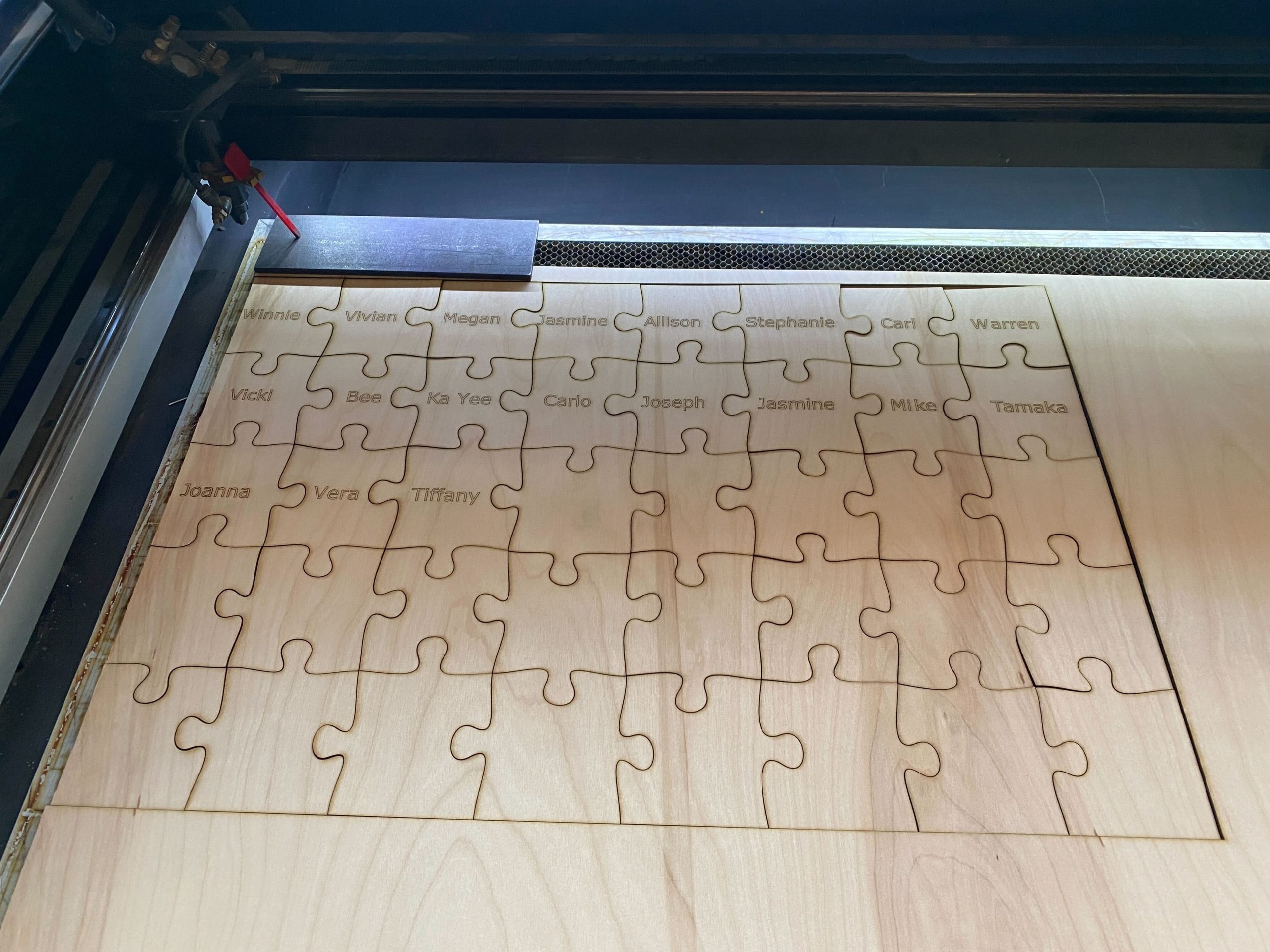
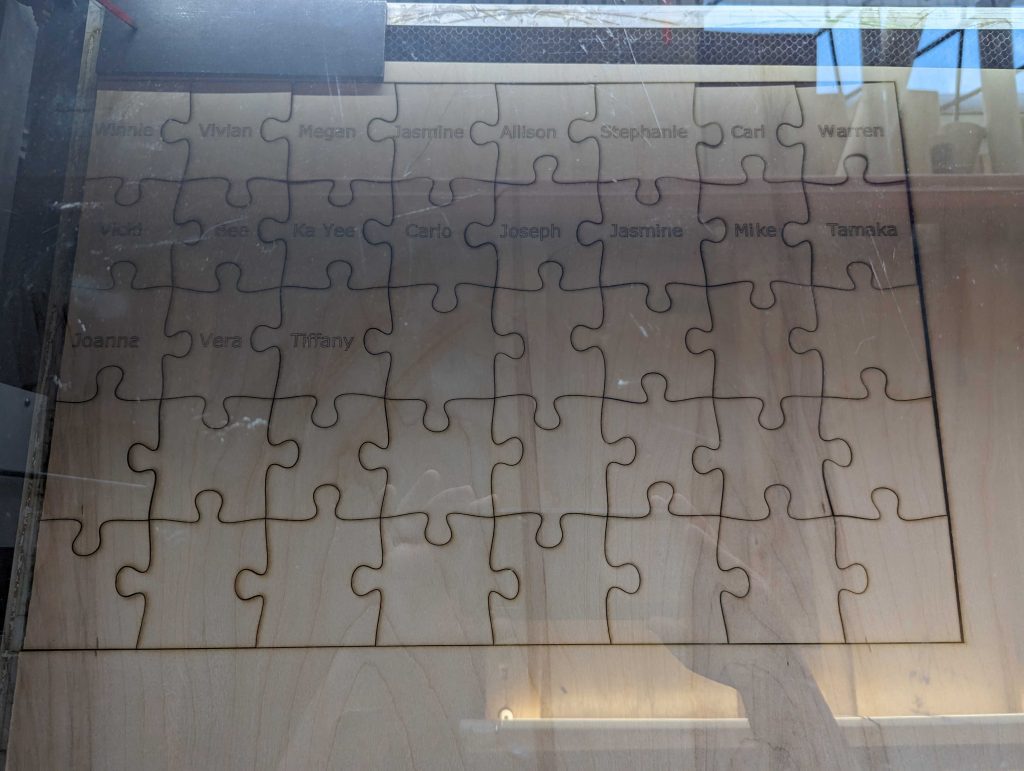
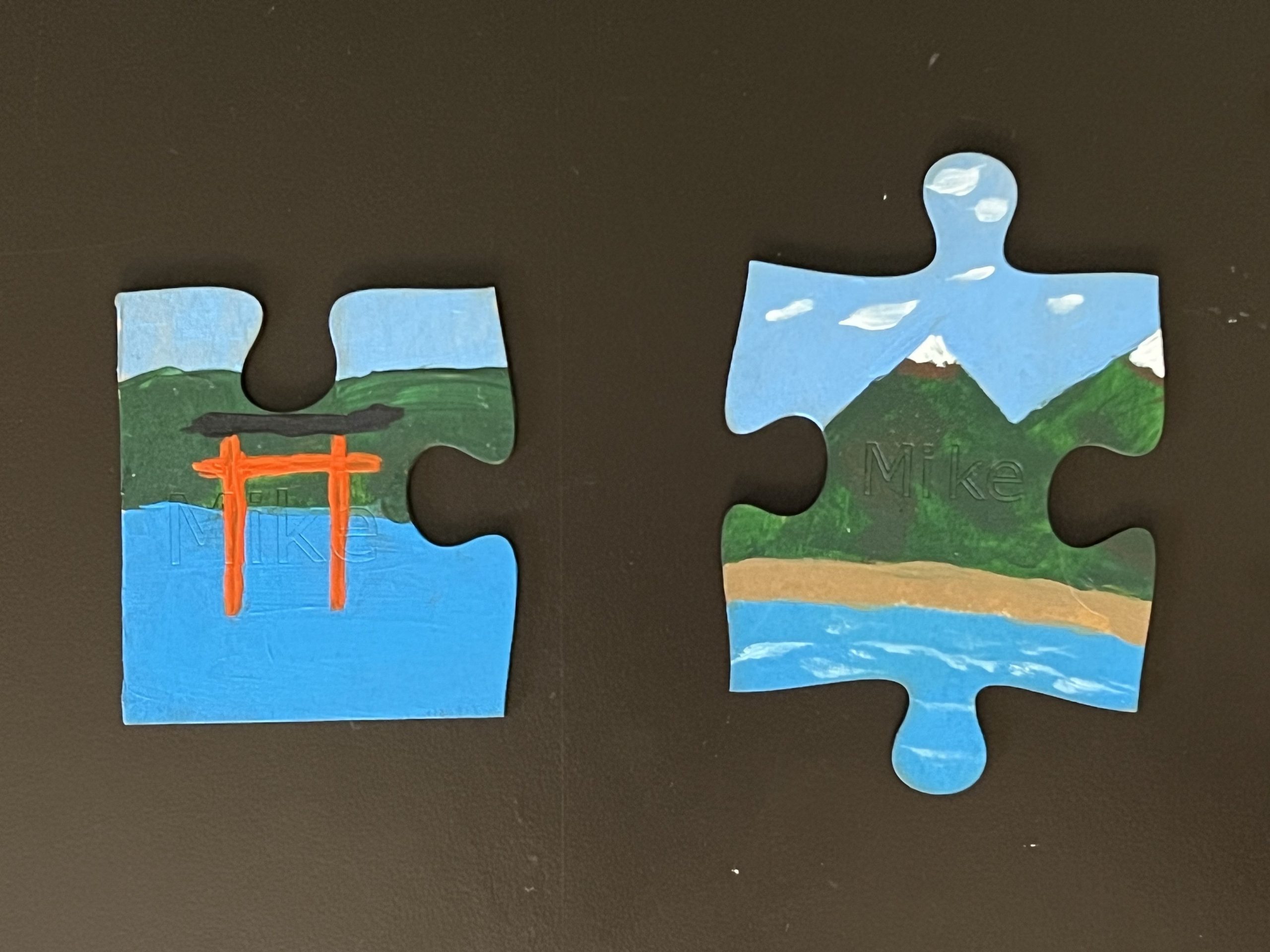
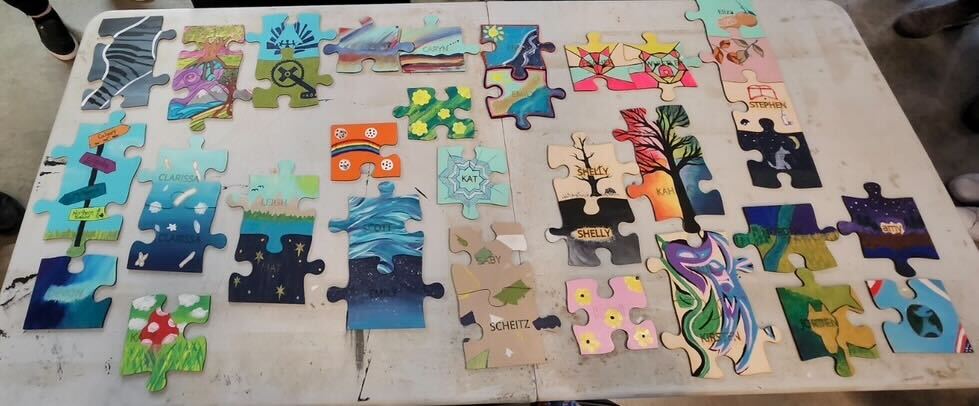
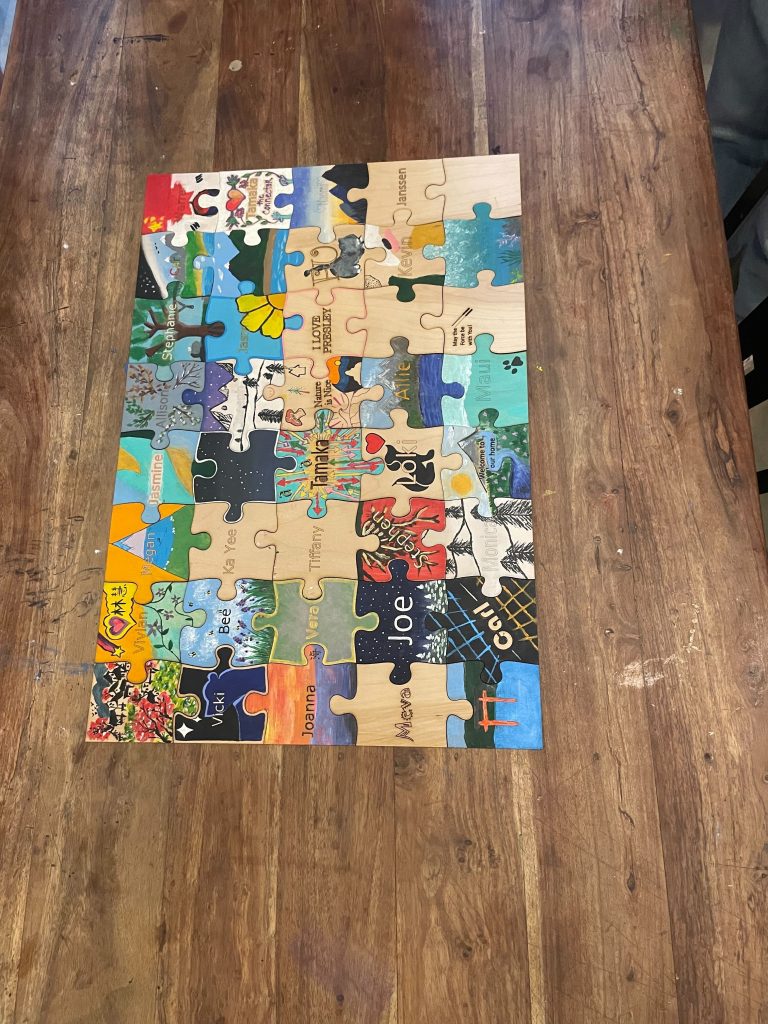
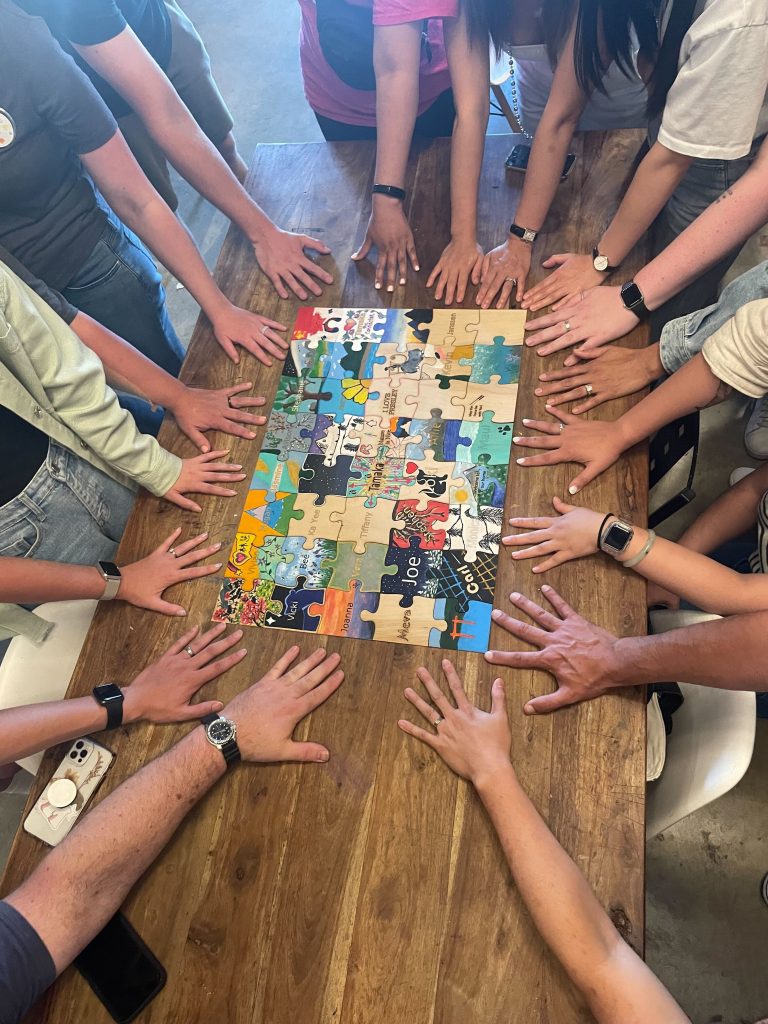
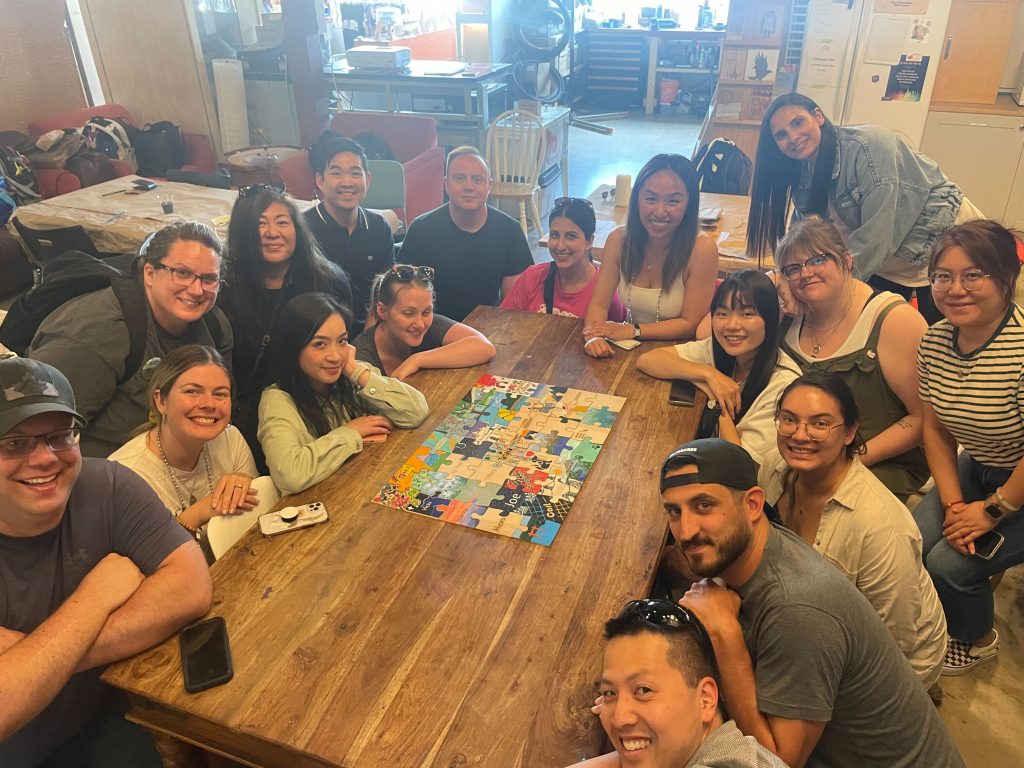
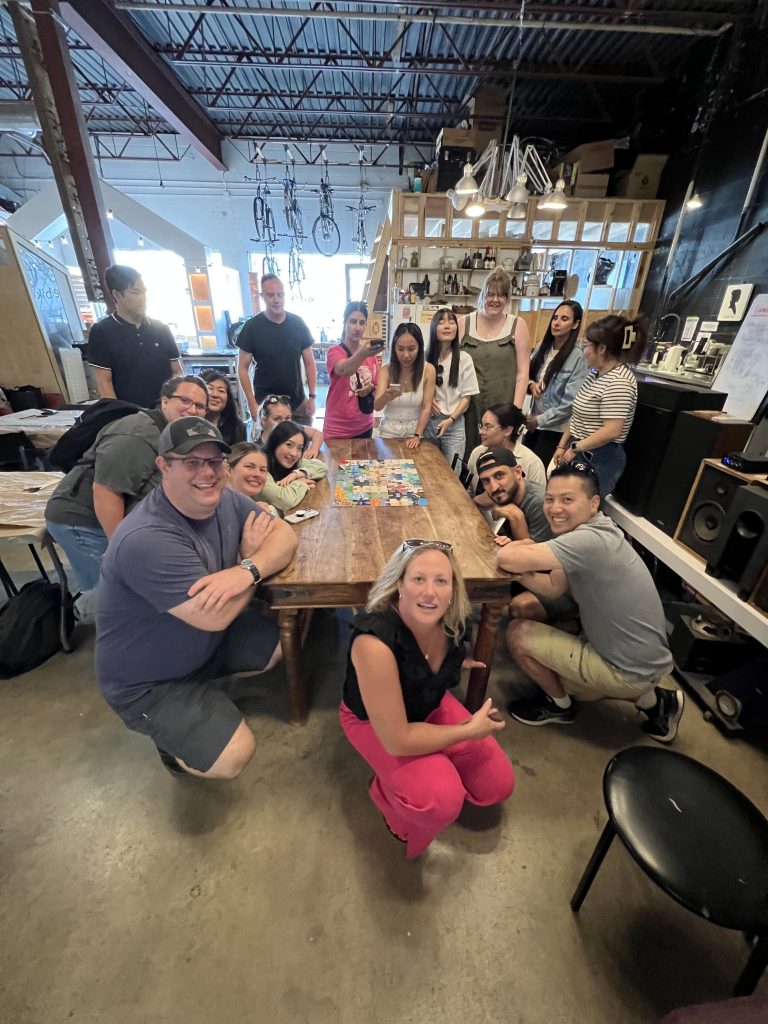

Other Maker Challenges
Inclusive and Immersive Makerspace Goosechase – “Personalizing Making”
Your Critical Learning Task #1 afforded you the opportunity to engage in important and rich texts that defined making, makerspaces, and the maker mentality, while allowing you to examine the foundational theories associated with making. Take approximately 25 minutes (5 minutes each) to present your CLT #1 presentations to each other. From here, you will put together a 1-minutes highlight video to encapsulate the teachings and learnings from your presentations. Focus on what you, as a group feel is important and should be your group’s focus for this week.
Inclusive and Immersive Makerspace Goosechase – Personalizing Making Mission instructions
Inclusive and Immersive Makerspace Goosechase – “How Do You Define Success and Failure”
Success and failure are often seen on two ends of the spectrum instead of part of the process. In your group, find an innovative way to create your definition of success and failure and it means to the making process. Uou can use any, and I mean ANY, way to display your definition. Creativity and innovation is a key component of making and adopting the inclusive design thinking process, so enjoy, have fun, and define. Make sure that it is very clear your rendition of success and failure as it pertains through making in your product of this challenge.
Inclusive and Immersive Makerspace Goosechase – How Do You Define Success and Failure Mission instructions
References:
Cohen, J., Jones, W.M., Smith, S. & Calandra, B. (2016). Makification: Towards a framework for leveraging the maker movement in formal education. In Proceedings of Society for Information Technology & Teacher Education International Conference 2016 (pp. 129-135). Chesapeake, VA: Association for the Advancement of Computing in Education (AACE). Retrieved from http://www.learntechlib.org/p/171660
Kye, H. (2020). Who is welcome here? A culturally responsive content analysis of Makerspace websites. Journal of Pre-College Engineering Education Research (J-PEER), 10(2). https://doi.org/10.7771/2157-9288.1190

